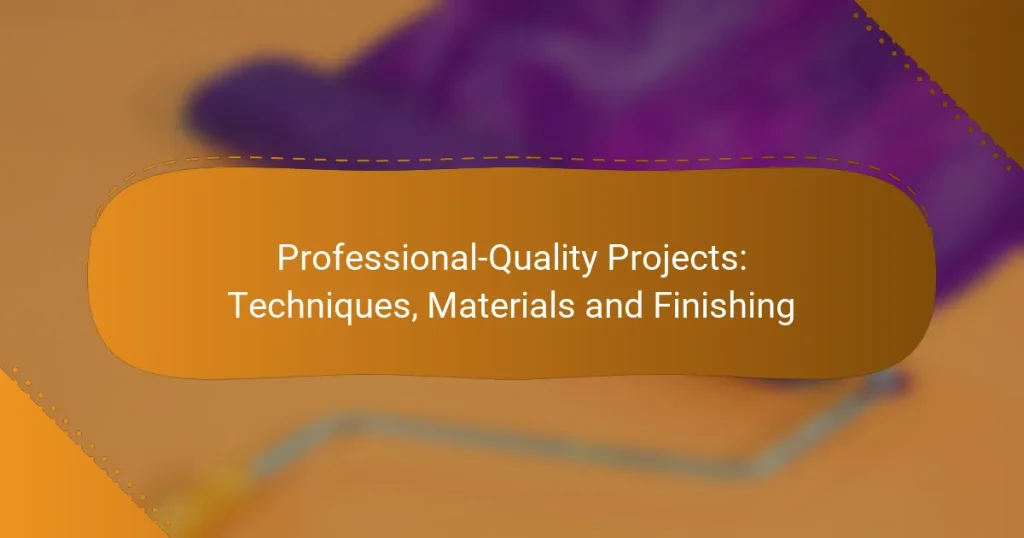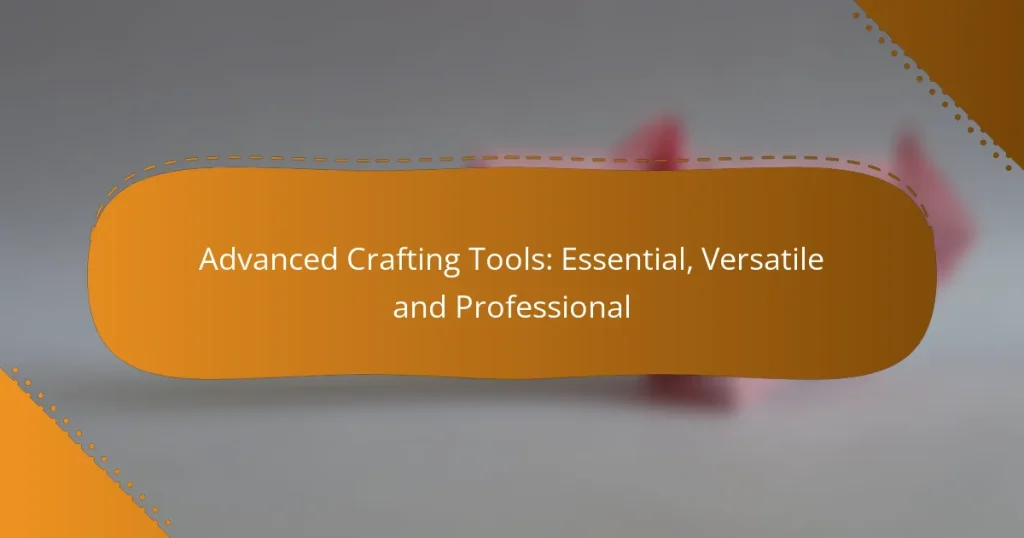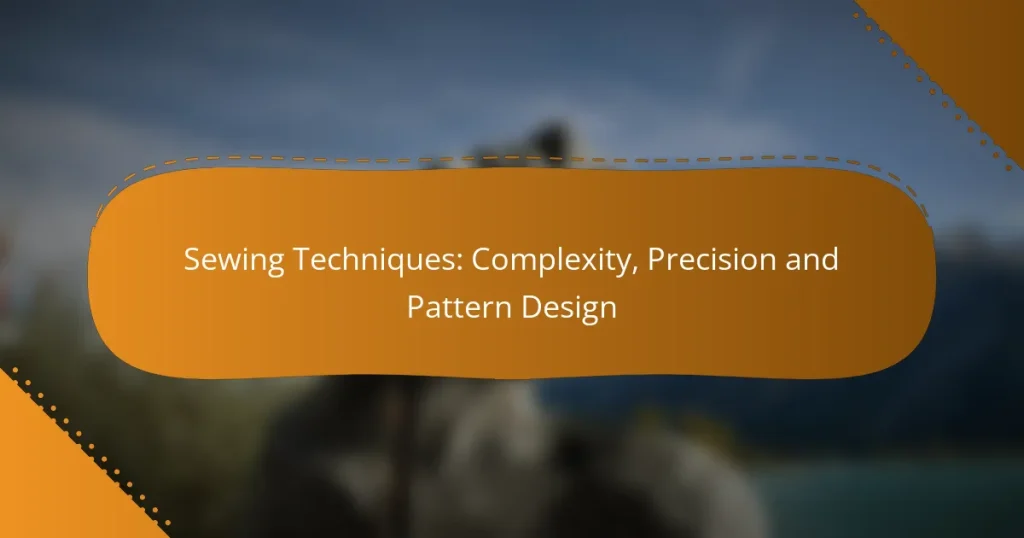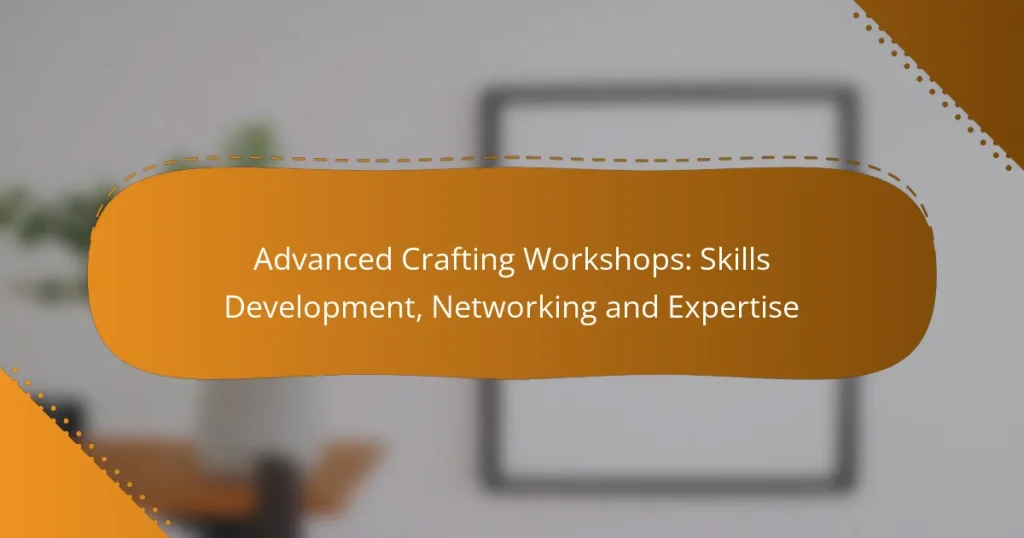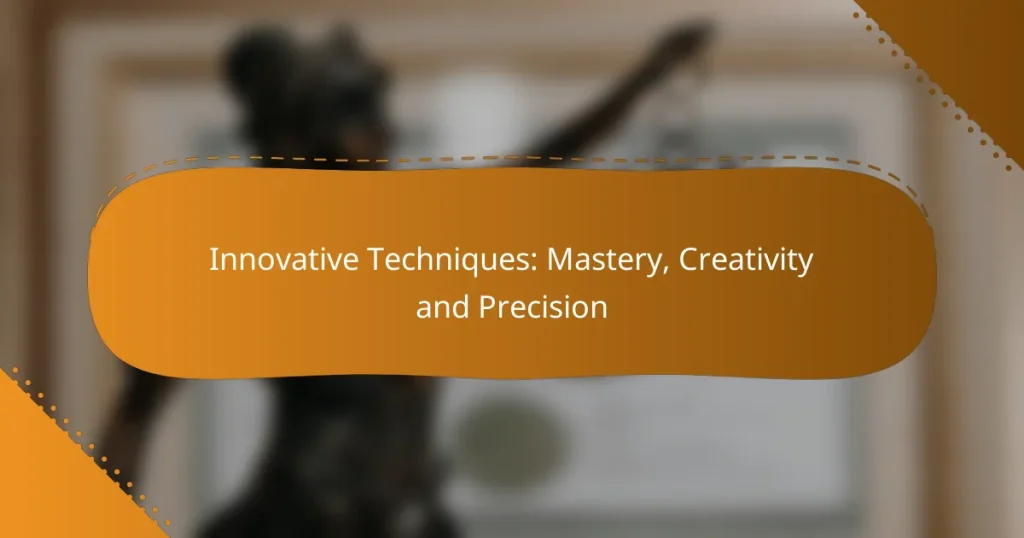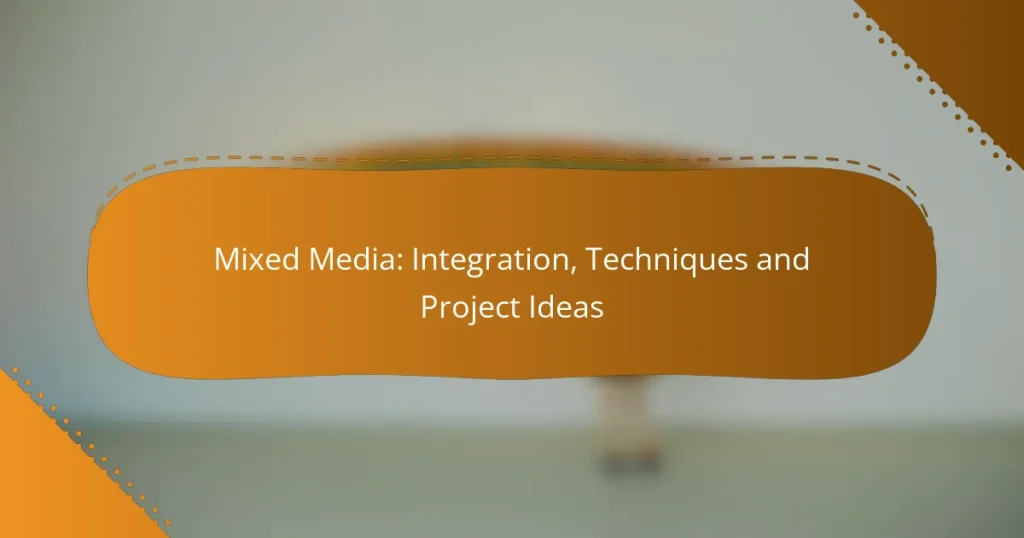Advanced crafting techniques can greatly enhance the quality and uniqueness of your projects, allowing for more intricate and visually appealing designs. By mastering methods such as layering, texturing, and color blending, you can elevate your creations to a professional level. Selecting the right tools and high-quality materials is essential for achieving the best results in your crafting endeavors.
Advanced Crafting Tools: Essential, Versatile and Professional
Transitioning to Professional Crafter: Skills, Mindset and Strategies
Sewing Techniques: Complexity, Precision and Pattern Design
Advanced Crafting Workshops: Skills Development, Networking and Expertise
Innovative Techniques: Mastery, Creativity and Precision
Mixed Media: Integration, Techniques and Project Ideas
What advanced crafting techniques can enhance my projects?
Advanced crafting techniques can significantly elevate the quality and uniqueness of your projects. By incorporating methods such as layering, texturing, and color blending, you can create more visually appealing and intricate designs.
Layering techniques
Layering involves applying multiple layers of materials or colors to add depth and dimension to your work. This technique can be used in various crafts, such as painting, scrapbooking, or even woodworking. For example, in painting, you might start with a base layer and gradually add translucent washes to create a rich, complex surface.
When layering, consider the drying times of different materials to avoid smudging. A common pitfall is using too many layers, which can lead to a cluttered appearance. Aim for a balanced composition by allowing some layers to show through.
Texturing methods
Texturing adds tactile quality and visual interest to your projects. Techniques such as embossing, stenciling, or using textured papers can enhance the overall look. For instance, in card making, you might use an embossing folder to create raised designs that catch the light.
Experiment with different tools and materials to achieve various textures. Keep in mind that too much texture can overwhelm your design, so use it strategically to highlight specific areas.
Color blending strategies
Color blending involves mixing colors to create smooth transitions and gradients. This technique is essential in painting and can also be applied in digital design. For example, using a wet-on-wet technique in watercolor allows colors to merge seamlessly on the paper.
To achieve effective blending, use a palette knife or brush to mix colors thoroughly before applying them. Avoid using colors that are too contrasting, as they can disrupt the flow of your design. Instead, choose colors that complement each other for a harmonious effect.
Mixed media applications
Mixed media combines various materials and techniques in a single project, allowing for greater creativity and expression. You might combine paint, fabric, paper, and found objects to create a unique piece of art. For example, a canvas might feature painted elements alongside collaged photographs.
When working with mixed media, consider the compatibility of your materials. Some adhesives and paints may not work well together, leading to issues down the line. Test small sections first to ensure your chosen materials adhere properly.
3D crafting innovations
3D crafting innovations, such as using foam, clay, or 3D printing, can transform your projects from flat to dimensional. These techniques allow for more interactive and engaging designs. For instance, creating a model with foam can add a realistic touch to architectural projects.
When venturing into 3D crafting, think about the structural integrity of your designs. Use supports where necessary and be mindful of weight distribution. Additionally, familiarize yourself with any local regulations regarding materials, especially if you plan to sell your creations.
How can I effectively use tools for advanced crafting?
To effectively use tools for advanced crafting, focus on selecting the right tools for your specific techniques and materials. Understanding the purpose and functionality of each tool will enhance your crafting efficiency and outcomes.
Essential tools for layering
Layering in crafting requires tools that allow for precision and control. Essential tools include craft knives, blending brushes, and various adhesives. Craft knives help in cutting materials cleanly, while blending brushes enable smooth transitions between layers.
When layering, consider using a light adhesive that allows for repositioning, such as a spray adhesive or a repositionable glue stick. This flexibility is crucial for achieving the desired depth and texture in your projects.
Best tools for texturing
Texturing tools are vital for adding dimension to your crafts. Tools such as texture rollers, stamps, and embossing folders can create intricate patterns on various surfaces. Choose tools based on the material you are working with, as some textures work better on paper while others are suited for fabric or clay.
Experiment with different techniques, such as dry brushing or sponging, to enhance the texture. A good practice is to test your tools on scrap material to see how they interact with your chosen medium before applying them to your final piece.
Top brands for color blending
For effective color blending, consider brands known for their quality products, such as Copic, Prismacolor, and Winsor & Newton. These brands offer a range of markers, pencils, and paints that blend smoothly and provide vibrant colors.
When selecting blending tools, look for those that offer a range of shades and are compatible with your chosen medium. Using a color wheel can also help in understanding how to blend colors effectively for your projects.
What materials are best for advanced crafting?
For advanced crafting, the best materials include high-quality papers, premium paints, and durable adhesives. These materials enhance the overall quality and longevity of your projects, ensuring professional results.
High-quality papers
High-quality papers are essential for achieving crisp, clean results in advanced crafting. Look for papers with a weight of at least 200 gsm for durability, especially when working with intricate designs or mixed media.
Consider specialty papers such as watercolor, cardstock, or handmade varieties, which can add unique textures and finishes to your projects. Always test a small sample before committing to a large purchase to ensure compatibility with your techniques.
Premium paints
Using premium paints can significantly elevate your crafting projects. Acrylics, watercolors, and oil paints from reputable brands often provide better pigmentation and coverage, allowing for more vibrant and long-lasting results.
When selecting paints, consider the finish you desire—matte, glossy, or satin—and ensure they are suitable for your chosen materials. Investing in a few high-quality colors can be more beneficial than a wide range of lower-quality options.
Durable adhesives
Durable adhesives are crucial for maintaining the integrity of your advanced crafting projects. Choose adhesives that are specifically designed for the materials you are using, such as PVA glue for paper or epoxy for heavier items.
Be mindful of drying times and flexibility; some adhesives dry clear and remain flexible, which is ideal for mixed media projects. Always follow the manufacturer’s instructions for the best results and avoid common pitfalls like over-application, which can lead to messy finishes.
What are the prerequisites for mastering advanced crafting techniques?
To master advanced crafting techniques, one must have a solid foundation in basic crafting skills and a thorough understanding of various materials. These prerequisites ensure that crafters can effectively apply complex methods and achieve high-quality results.
Basic crafting skills
Basic crafting skills include proficiency in fundamental techniques such as cutting, shaping, and assembling materials. Familiarity with tools and their proper usage is essential, as it allows for precision and safety during the crafting process.
Practicing these skills through simple projects can build confidence and competence. For example, starting with basic sewing or woodworking projects can help develop the dexterity and problem-solving abilities needed for more advanced techniques.
Understanding of materials
A deep understanding of materials is crucial for advanced crafting. Different materials have unique properties that affect their workability, durability, and aesthetic appeal. Knowing how to choose the right material for a specific project can significantly influence the outcome.
Crafters should familiarize themselves with various types of materials, such as wood, metal, fabric, and clay, including their strengths and weaknesses. For instance, knowing that hardwood is more durable than softwood can guide decisions in furniture making. Additionally, experimenting with different materials can lead to innovative techniques and creative solutions.
How can I learn advanced crafting techniques online?
Learning advanced crafting techniques online is accessible through various platforms that offer structured courses and tutorials. These resources often include video lessons, interactive projects, and community forums to enhance your skills.
Popular online courses
Several platforms provide excellent courses for advanced crafting techniques. Websites like Udemy, Skillshare, and Coursera feature classes on specific crafts such as woodworking, sewing, or pottery. These courses typically range from beginner to advanced levels, allowing you to choose based on your current skill set.
When selecting a course, consider factors like instructor experience, course reviews, and the depth of content covered. Many courses also offer project-based learning, which can help you apply techniques in practical scenarios. Look for courses that provide downloadable resources or community support for additional learning.
Additionally, platforms like YouTube host countless free tutorials from experienced crafters. While these may lack the structure of paid courses, they can be a great way to explore different techniques and find inspiration. Always check the credibility of the creator to ensure quality content.
